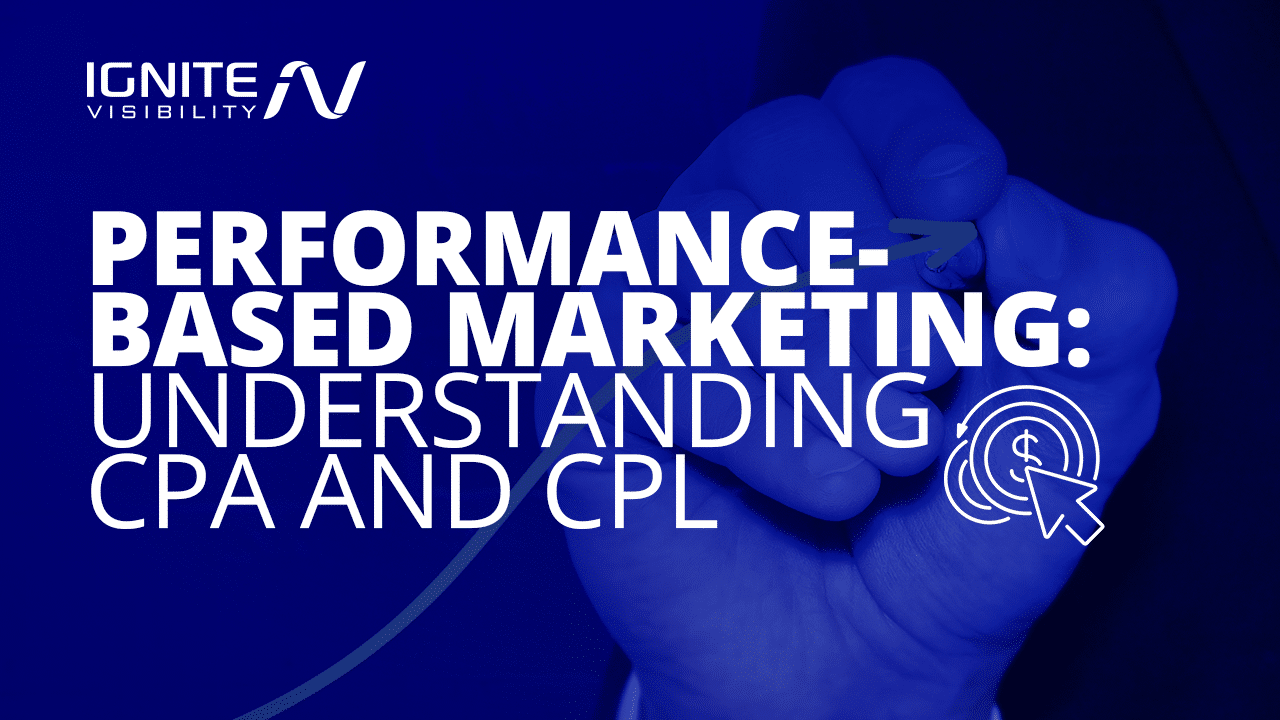
For marketing campaigns to deliver ROAS (return on ad spend), they have to provide results that are measurable. Wouldn’t it be ideal only to pay when the tactics perform?
If that sounds too good to be true, then meet performance-based marketing. In this model, you only pay for results. The objective is for a person to take a specific action that is of value to your business.
Within the structure of digital performance marketing, there are two key metrics to understand—CPA (cost per action/acquisition) and CPL (cost per lead).
In this post, learn everything you need to know about this type of marketing and how to integrate CPA and CPL strategies into your marketing plans.
Here’s What We’ll Cover:
- The Evolution of Performace-Based Marketing
- Examples of Performance-Based Marketing
- CPA (Cost Per Action) in Performance-Based Marketing
- CPL (Cost Per Lead) in Performance0Based Marketing
- CPA vs. CPL: Which Should You Use?
- 3 Tips to Integrate Both Into Your Marketing Strategy
- CPA & CPL FAQs
The Evolution of Performance-Based Marketing
Let’s start by defining performance marketing.
It’s results-based, involving promoting a product or service that encourages an action by the viewer. These tactics have measurable goals, so there are only costs when someone responds to the ad. Key attributes include:
- It’s a bottom-funnel ad type that has a call-to-action embedded for a response.
- You can track the action taken by someone.
- Data from interactions with ads can lead to optimizing the advertising.
Its beginnings go back to the early days of SEM (search engine marketing). Companies embraced this way to drive traffic to their websites as one of the first ways for digital advertising to be performance-based.
As digital marketing expanded, so did the opportunity for performance-based tactics, which now include SEM, social media ads, display advertising, native advertising, and affiliate marketing.
Today’s performance-based marketing has become a data-rich environment for optimization and insights. This new portfolio of ad tactics provides new ways to target users with data as the fuel.
The addition of AI into the digital ad ecosystem is an emerging trend that’s improving the approach. With advanced algorithms and machine learning techniques, automation and optimization become faster and easier to scale. AI is also a path toward personalization, and 88% of marketers believe it successfully delivers better customer experiences.
How Online Performance Marketing Works
In any of these tactics, you’re launching ads on third-party sites with a budget and a measurable goal—clicks, views, sales, app downloads, impressions, etc.
The platform where your ad serves only charges you when someone meets that goal. These campaigns are bottom-funnel, driving someone to become a lead or convert to a customer.
It’s different from any type of advertising with a set price, and you cannot track its performance. There may still be a place for this in your marketing strategy, such as conference or event sponsorships. They can be good awareness tools, but it’s hard to calculate the ROI of these.
Examples of Performance-Based Marketing
With multiple ad channels, there are examples of performance-based marketing in almost any digital interaction. Here are some examples.
Google Ads
These cost-per-click (CPC) ads are part of our daily experience whenever we look for information on a search engine. Those sponsored posts for accounting services are there because the company bid on that keyword. Only when someone clicks it do they pay Google.
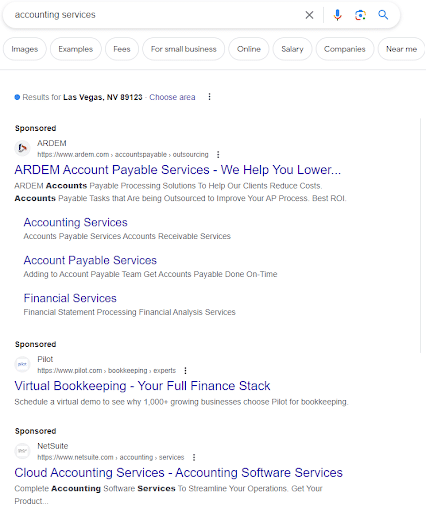
Example of Performance-Based Marketing for Accounting Services
Social Media
Social media ads are also performance-based. The offer can be a variety of things, from a content download to making a purchase. Again, companies only pay when there’s an action.
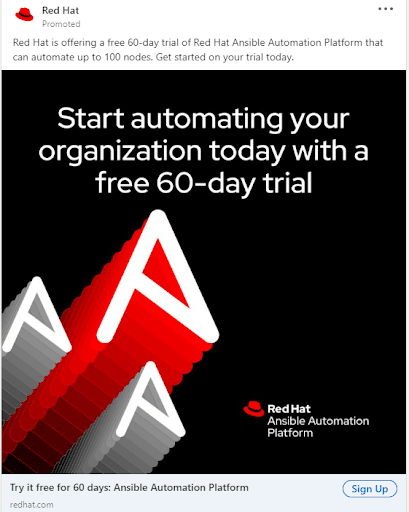
Social Media Ads – CPA vs CPL
Display Ads
Display ads have many forms—banners, pop-ups, skyscrapers, and more. It can be a performance-based tactic when purchased on a CPM (cost per mille) or CPC basis. Ad cost directly correlates to the number of impressions or clicks.
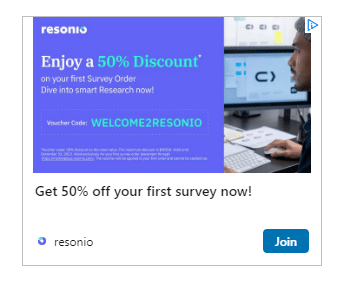
Display Ad Example
Native Advertising
Native advertising appears on web pages, usually as sponsored content. It looks less like an ad than display and uses CPM or CPC as the cost model.
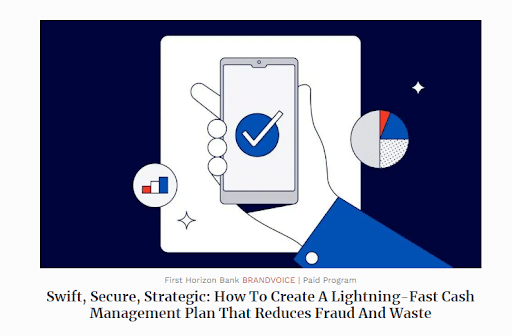
Native Advertising Example of Performance-Based Marketing
Any of these ad types can be part of your performance marketing strategy. They can yield great results for increasing traffic and leads. In considering the modern approach to it, you’ll need to understand intimately CPC and CPL marketing.
What is CPA in Performance-Based Marketing?
In the world of marketing, CPA stands for “cost per action” or “cost per acquisition.” It is a type of conversion rate marketing.
You pay for each successful acquisition generated by the ad, which could be a sale, form submission, or registration to an event, for example. It refers to the cost to acquire the conversion, which is typically a click. The lower it is, the greater the performance of your ad
For example, if you say that your end goal is to get consumers to download your app. When figuring out your CPA, you will only count consumers who downloaded the app. This will tell you how much it costs for you to get each conversion.
Just a warning: Don’t confuse CPA with cost per click (CPC). CPC is a type of CPA focusing on clicks as the acquisition. With CPA, you’re measuring how much it costs to get a paying customer. It doesn’t reveal how much you’re actually paying the platform
Why Should You Use Cost Per Action?
CPA makes it easy to see how much each campaign costs you. Because of its flexibility, it’s great for businesses of all sizes and industries.
For example, small businesses might choose cheaper click-based ads, but larger companies may pay for expensive download-based ads.
Do some research before choosing this model. CPA digital marketing only works if you know how much an action is worth to your business. Without a baseline, you’re stuck with guessing. Guessing about costs will spiral out of control.
How to Calculate CPA
To calculate CPA, you divide the total actions by the amount spent on the ad:
CPA = Ad Spend/Total Actions
So, if your total cost for the ad over a month is $5,000, and you can attribute 250 installs to the campaign, your CPA is $5,000/250, which equals $20.
How to Optimize for Cost Per Action
To use CPA effectively, you must optimize it as much as possible. Otherwise, you won’t make any money with it.
Here are the best ways to optimize your CPA:
1. Improve Your Landing Page
A good landing page is the first chance to make a good impression. Landing pages must align with the ad content. If they don’t, there’s an immediate disconnect, which can cause people to bounce immediately.
The goal is to keep people interested. If you have a bad landing page that doesn’t resonate with your audience, they will leave. That means lots of money lost over time.
A good landing page conversion rate is 10%. Elements of landing pages that positively impact conversion rates include video, imagery, graphics, social media share icons, concise text descriptions, and short contact forms.
A/B testing is the best way to optimize your landing pages. Create two versions of your page and see which performs better.
From there, keep testing and tweaking until you get your page to a place where your audience enjoys it. Once you have a landing page that resonates with your audience, you’ll start to see returning dividends on your ad investment.
2. Fine-Tune Targeted Demographics
One of the key factors of effective advertising is targeting the right audience. Advertising to the wrong people will only burn your money.
To find the right audience, you need to create a buyer persona or your ideal customer profile. It comes from careful market research into who needs your product or services most.
Your persona gives you a baseline target demographic. With testing, you can refine it further.
The more you work on your buyer persona, the more you’ll understand what your target audience is looking for. Once you know what they’re looking for, you can create landing pages and offers that speak to them.
3. Write Effective Ad Copy
Copy is the defining aspect of most ads’ success but there’s more to just putting words on the page. High-converting copy is never an accident.
It should be short, as personalized as possible, and address common challenges and how your product or service alleviates them. When CTAs are more customized and relevant, they convert 42% more people.
Focus on emotion, as that’s what drives behavior. Many who encounter your ad aren’t deliberating, looking for a solution. The proper context in ad copy reminds them that they do. Your CTA, while only a few words, is critical to conversion. Those CTAs that do this well have clarity and the right amount of persuasion.
What is CPL in Performance-Based Marketing?
Cost per lead (CPL) is a method of performance-based marketing in which you pay for each new lead generated.
Acquiring that lead doesn’t mean the person is ready to buy. The prospect engaged with your brand and raised their hand, demonstrating interest. You then qualify that interaction to define it as a lead.
The action begins with a top- or mid-funnel conversion campaign. Someone downloads content, attends a webinar, or completes a contact form on your website. CPL aligns more with longer buying cycles, where lead nurturing is necessary.
Another marketing strategy for CPL is affiliate marketing. Web hosting companies pay affiliates for each subscription referral. Hosting companies can afford it because they make lots of money from subscriptions.
For example, a web host tells an affiliate they’ll pay $50 for each lead the affiliate produces. If they’re paying this much, they only want high-quality leads.
To ensure this happens, they negotiate a deal that says leads must purchase a two-month subscription for the affiliate to get paid.
The business only pays for long-term customers and gives them an established CPL to factor into their budget.
When Should You Use CPL Marketing?
To be successful at digital performance marketing, you need to know how much it costs to acquire a lead. CPL marketing is the best way to figure out this information. In most cases, this approach fits best with products with long-term sales models.
However, CPL-based marketing tactics are a different story. If you’re planning on making money from leads for an extended period of time, CPL marketing is better than CPA.
Many SaaS companies prefer CPL because they make money from customers over time. A store selling less expensive products would probably want to avoid CPL for cost-related reasons.
How to Calculate Cost Per Lead
To calculate CPL, divide your marketing costs by the number of new leads. Here is the formula to use:
Cost Per Lead (CPL) = Total Marketing Costs / Total New Leads
If your cost for a marketing campaign with leads as the performance metric is $10,000, and you garner 100 leads, your CPL is $100.
More complex calculations also factor in time spent and third-party costs (such as marketing tools).
Benchmarks for the average CPL vary by industry, company size, and tactics. Remember, without knowing the value of a lead, the number won’t mean much or assist you with optimizing your performance marketing strategy.
The Two Types of CPL Ads
There are two different types of CPL ads: single opt-in, or SOI, and double opt-in, or DOI. Let’s take a look at the differences between these two.
Single Opt-In or SOI Ads
Single opt-in, or SOI, ads are a very common way to get conversions. Once a consumer clicks on your ad, they opt-in for more information by leaving their email address or some other information, such as their ages, location, or interests, that will help you improve your marketing efforts.
Once they provide their email address, that’s it! They’ve opted into your offer. Because people only have to do one thing to opt-in, many companies use single opt-in ads with success.
Double Opt-In or DOI Ads
Double opt-in, or DOI, ads take it one step further by requiring the consumer to take two actions. Because of their longer funnels, they aren’t always as successful as SOI ads.
A DOI ad is often set up like this: the consumer fills in the data (often an email address) and then you send an email confirmation for the consumer. They only opt into your offer when they hit the confirmation button in your email.
Since there are multiple steps for the consumer, there is often a lower conversion rate but a higher testing budget and more work on the side of the advertiser. However, DOI ads usually produce higher-quality leads. Since the consumer has to do some work to opt into the offer, they are usually more likely to purchase or sign up for whatever you’re selling.
How to Optimize Cost Per Lead
Dumping money into CPL marketing doesn’t guarantee results. Instead, you’ll need to create a strategy and craft some really great ads that your audience will love.
Here are a few ways to do so:
1. Target Based on Behavior
Many advertising mediums allow you to target based on behavior. This is a great way to ensure only relevant people see your product.
For example, if you sell accounting software, there’s no point in advertising this to those who aren’t in financial-based roles. This type of persona targeting works well with performance-based social media advertising on LinkedIn. You can target those with roles related to finance and interests. As a result, you should see a higher ROI and conversion rate.
You can also retarget people who’ve visited your website. Most people don’t convert at first visit, and using retargeting can lead to an increase in conversion rate by up to 161%, according to Google data.
A way to make retargeting more refined is to do so based on the pages they visit.
For instance:
- If they browsed a particular service, you could retarget based on that service.
- If they left items in their cart, you could entice them to complete the sale.
Keep in mind that not all pages equal interest, though. Someone who checked out one blog post does not have the same intent to purchase as someone who filled up an abandoned cart.
2. Optimize Your Website for Conversions
With CPL marketing, your business is only as good as its website.
Make sure it:
- Indicates social proof (reviews, high-profile features, etc.)
- Loads remarkably fast
- Is mobile-friendly
- Explains why your product or service will help the visitor
- Answers frequently asked questions
- Makes it easy to speak to a sales representative
Conversion-optimized websites will drive low CPLs. The easier you make it to complete your funnel, the more people will do it. This starts with improving your website and optimizing it for sales. Enhancing your site and the user experience is an investment that will yield returns.
3. Reduce Poor Quality Leads
Not all leads are equal. While a high number of leads might look good on a spreadsheet, if they aren’t purchasing, they aren’t profitable.
If your CPL campaign keeps getting calls about a product you don’t offer, something is wrong. These poor-quality leads will only inflate your CPL – not make sales.
To avoid getting inundated with bad leads, optimize your CPL campaign to filter them out. Here are a few strategies to try:
- Add pricing to your website. This may result in fewer calls, but those calls will be from people who are ready and willing to spend the money on your services.
- Add negative keywords to your keyword bids in paid search.
- Add conversion tags to your website. These tags help you tweak your site to serve visitors better.
It may take a little bit of work to weed out the bad leads but it’s work that’s worth it.
CPA vs. CPL: Which Should You Use?
The fundamental difference between CPA vs. CPL is that one is a cost model attributed to actions, whereas the other is for lead acquisition.
Here are detailed differences and why you may choose one over the other.
Evaluation of Specific Actions vs. Someone Moving Through the Buyer’s Journey
CPA campaigns focus on a specific action that happens immediately. Someone clicks an ad (the action) and lands on your website. Most CPA ads are about quick conversion of a sale. It’s the retargeting ad that offers a promo to complete that abandoned cart.
CPL is not a single action metric. It requires more steps after the initial engagement to qualify the prospect and continue to nurture them through the funnel to attain the sale.
One-Time Sales vs. Lifetime Value
Another critical distinction of CPA vs. CPL revolves around business models.
CPAs usually drive quick, one-time sales for a low-cost product. Its purpose is to get people to buy now.
CPL campaigns focus more on lifetime value because the buying process is longer, and the cost is higher. These leads, if converted, often become recurring revenue. SaaS is a great example of this. You spend time and effort to win their business after they become a lead. If you do, they become subscribers with a much higher customer lifetime value.
Hard Sale vs. Product or Service Education
The CPA model is a constant bombardment of urgency and is highly promotional. The message is: buy this now with this incentive. Either people ignore it or convert.
CPL creates the ability to educate prospective customers and form a deeper relationship. It’s the beginning of a conversation, where you get feedback from the person based on their actions. It enables more personalized marketing, as well.
Integrating CPA and CPL Strategies for Comprehensive Marketing
In considering if CPA or CPL is right for you, there are pros and cons to both, relating to costs, time, and resources. Your goal, the product you offer, and how people purchase from you all inform your decisions. Most businesses use both to some degree, and this mix can often deliver the best results.
To integrate these digital performance marketing tactics into your comprehensive strategy, keep these tips in mind.
#1: Define a Lead and its Value
You must clearly define what a lead is and the average value of a deal to have context on your CPL costs. When planning marketing strategies, start from here and determine how many leads you need to achieve a specific number of sales to hit your budget. It’s crucial to be data-focused in CPL campaigns.
#2: Consider Flexibility
CPA campaigns are easier to execute and budget and have more flexibility. They can be short- or long-term. A display ad may only run for 30 days, but SEM is ongoing.
#3: Capitalize on Buyer Intent
CPA ads in SEM, display, or social amplify buyer intent. If you have many purchases with these ads, you’ll allot more of your budget to CPAs. However, don’t let this run unchecked. Study your performance data to continue to decrease your CPA costs.
Don’t Think of CPA and CPL in Vacuums
CPA and CPL can complement one another and other types of inbound marketing, like SEO and content marketing. A CPA campaign often casts a wider net, while CPL is more targeted. They can be part of an integrated, omnichannel campaign where sales or lead acquisition occurs.
Using both helps adjust for the customer journey’s volatility because it’s no longer linear. It’s fragmented, and people can move back and forth through what Google calls the messy middle— a “complex space between triggers and purchase, where customers are won and lost.” They identify two things occurring here: exploration and evaluation.
You may acquire someone as a lead through a content download but then retarget them with a CPA ad, and that’s how you win the business.
Another example is looking at SEM campaigns at funnel stages. A top funnel SEM campaign revolves around people looking for ideas and inspiration to solve a problem with keywords that reflect this. A bottom-funnel SEM is about buyer intent. The same person could be a target and conversion in both.
FAQs About Performance-Based Marketing
1. What is CPA Marketing?
CPL marketing, or cost-per-lead marketing, is a method where the advertiser pays for each new lead generated. There are two types of CPL marketing: single opt-in, or SOI, and double opt-in, or DOI.
2. What is CPL Marketing?
CPL marketing, or cost-per-acquisition marketing, is an advertising technique where you evaluate the cost per acquisition by looking at how many people actually followed through your sales funnel.
3. Which is better for my business: CPA or CPL Marketing?
It depends on your goals. CPA marketing tends to get higher results in a faster time frame but CPL tends to make more money over a longer period of time.
If you have the time and are selling a more profitable product, you might be okay with the lead time on CPL marketing. If you have a less profitable product, you might want to try CPA marketing first.
Regardless of which type of marketing you decide to take on, be sure to do your research and frequently evaluate your progress.
4. What are key metrics to track in performance-based marketing?
It depends on which model you use and what your goal is. In general, the most important marketing metrics to track are impressions, clicks, click-through rate (CTR), conversions, conversion rate, ROAS, customer acquisition cost (CAC), and customer lifetime value (CLV).
5. How does performance-based marketing align with overall business goals?
Performance-based marketing can be instrumental in achieving goals, whether specific to sales revenue or increases in the number and quality of leads. Start from the big-picture goal, then break down what marketing initiatives you can use to meet them. Then, compare those to CPA and CPL methods, the types of ad tactics, and your budget to define your plan.
6. What are some of the common challenges in implementing performance-based marketing?
Challenges with implementation often parallel the maturity of your marketing operations. You have to have lots of pieces on the backend to measure performance-based marketing and collect and analyze data. You need to be able to attribute actions to an ad and track them.
Other issues relate to not defining what a lead is (and a qualified one), what the goals are, and what you should measure. Testing and optimization can also be difficult if you lack budget and resources.
7. How does performance-based marketing compare to traditional marketing models?
In performance-based marketing, your cost to advertise links directly to an action that potential customers must take. You allocate a budget on a platform, but they don’t charge you unless someone interacts. Traditional marketing focuses more on awareness rather than action. In most cases, it’s not measurable. You pay a flat fee for the advertisement.
8. Can performance-based marketing be effective for all types of businesses?
Yes, any type of company can use this type of marketing. No matter what you sell or who your audience is, there’s a place for performance-based digital marketing in your strategy. The key to success is following the best practices defined in this article, specifically around goals, data for targeting, and understanding the customer journey.
Want to Get the Most Out of Your Performance-Based Marketing?
Performance-based marketing has so many opportunities. It can be complex and requires understanding the customer journey, data, and marketing analytics. Whether you want immediate sales or more qualified leads, our team can help.
We leverage the power of CPA and CPL to help businesses in all industries drive targeted traffic and achieve their marketing goals. Our expert strategists work closely with clients to understand their unique needs and design customized performance-based campaigns that maximize return on investment.
Want to learn more about our PPC management services? Contact us for a free proposal!